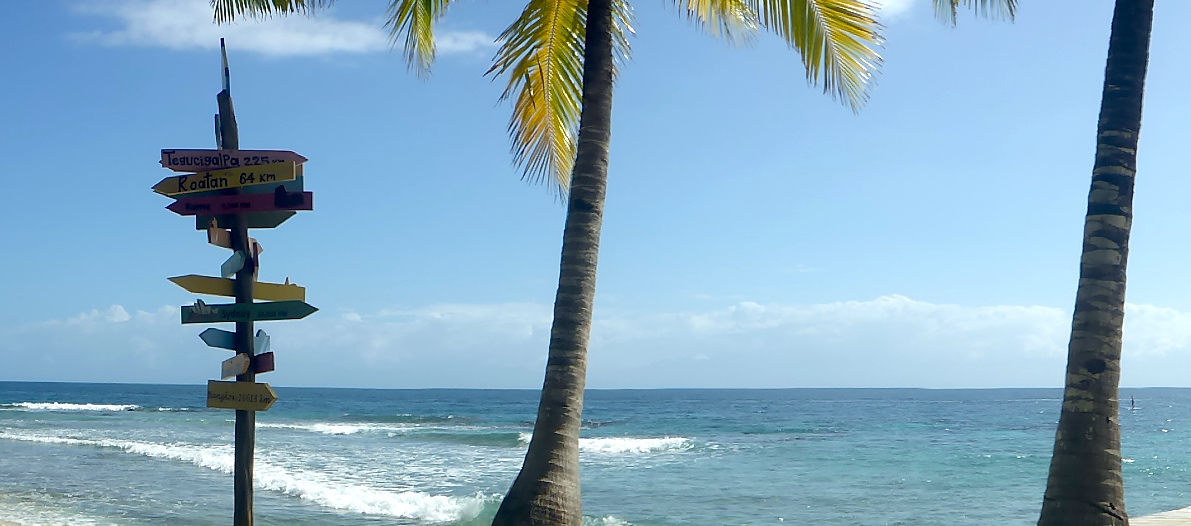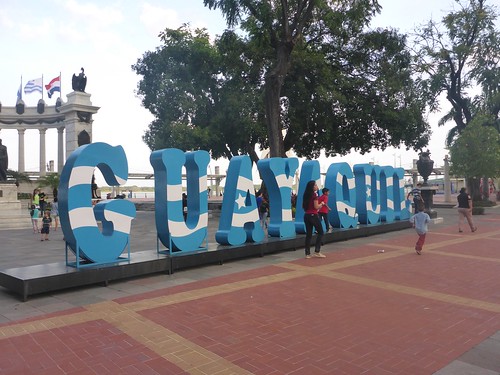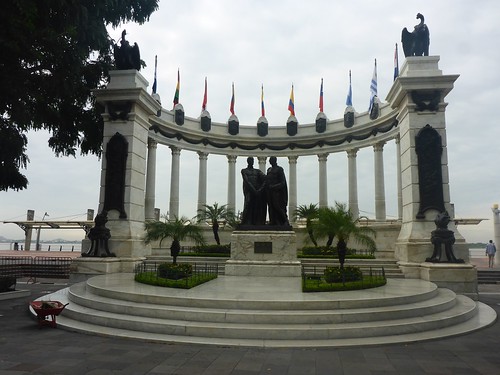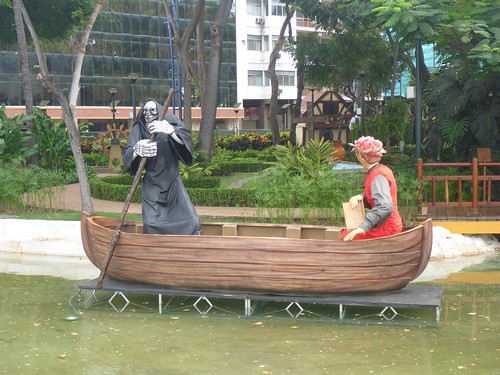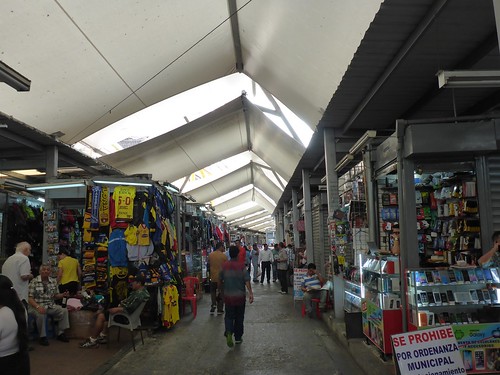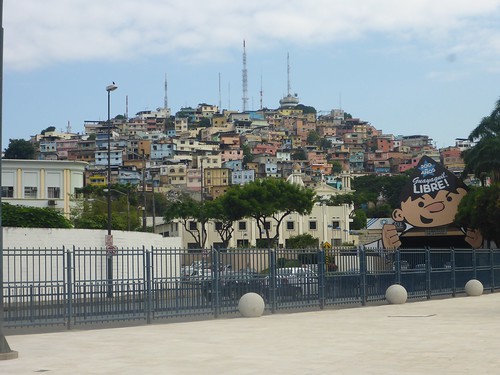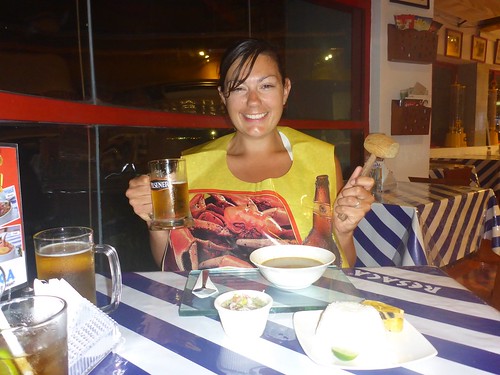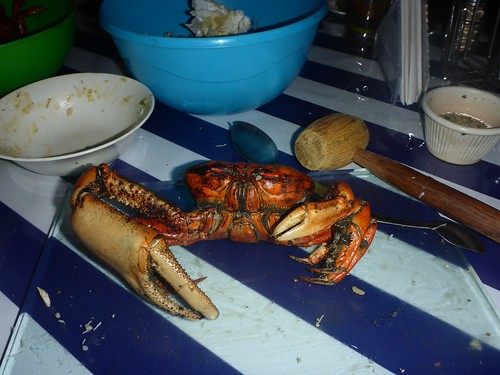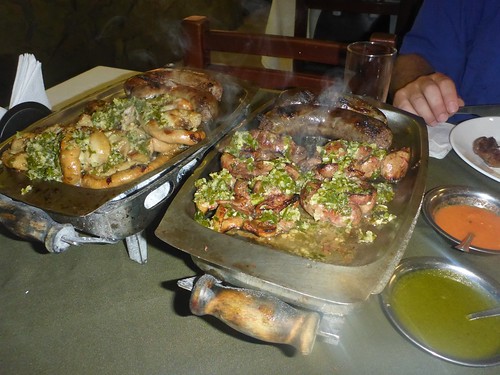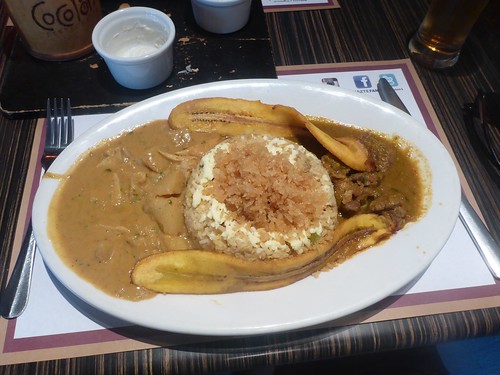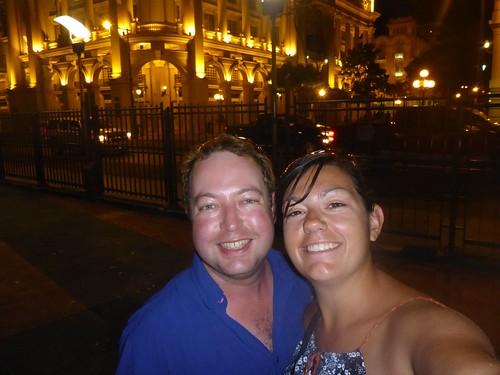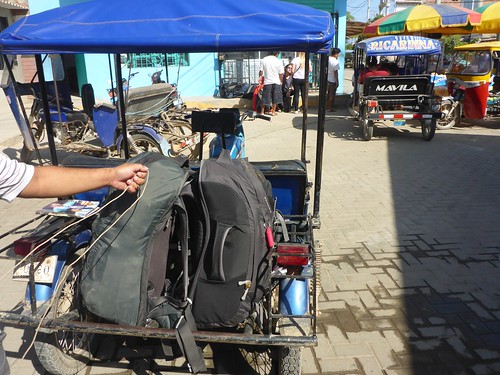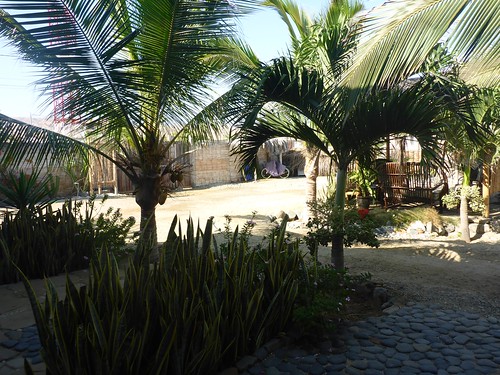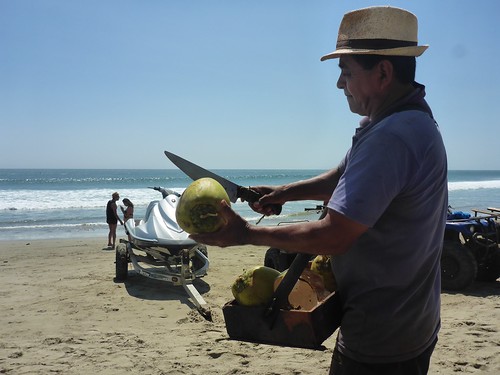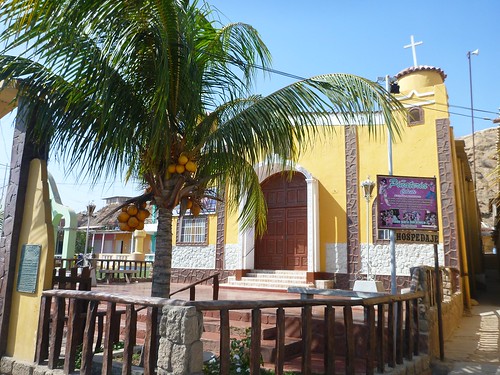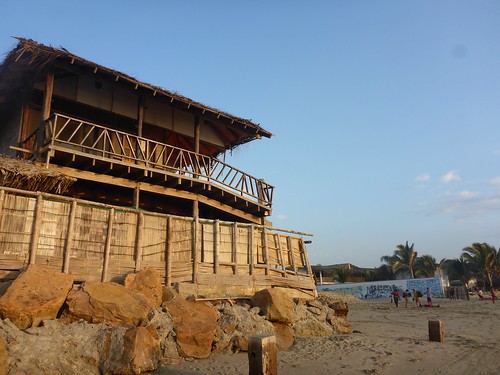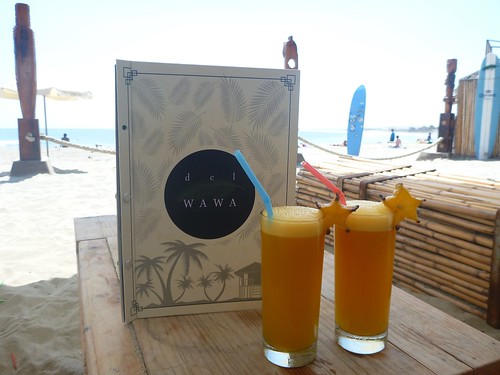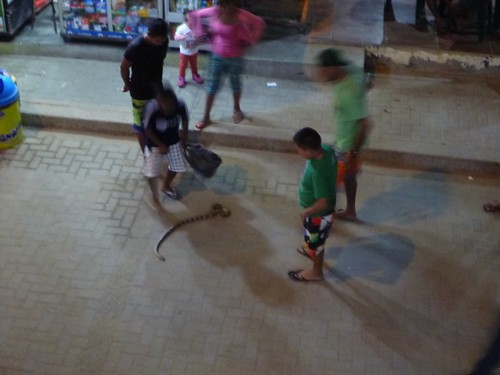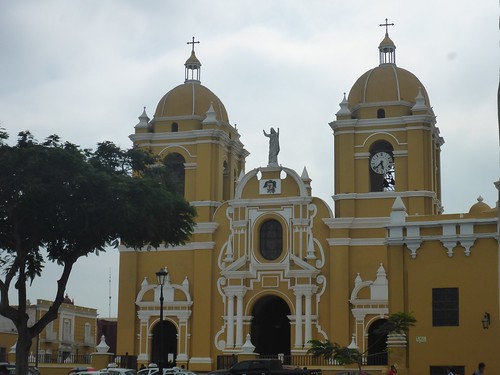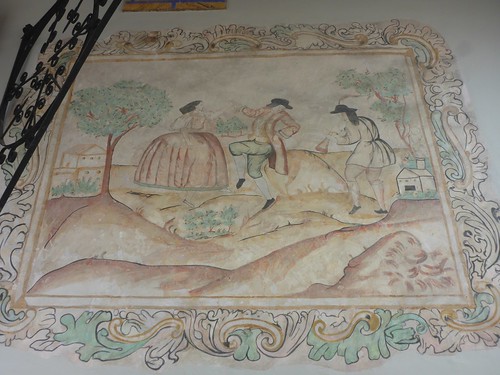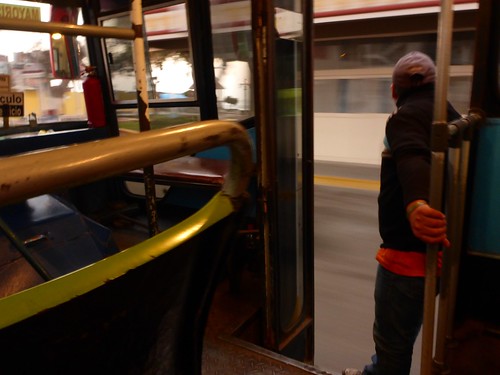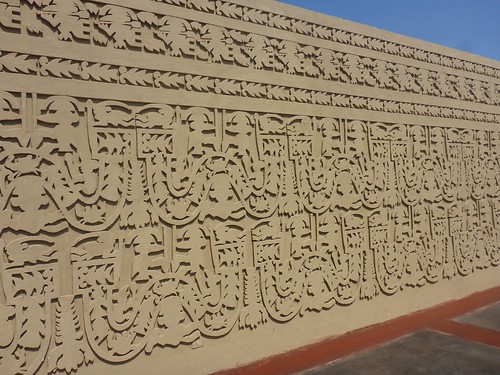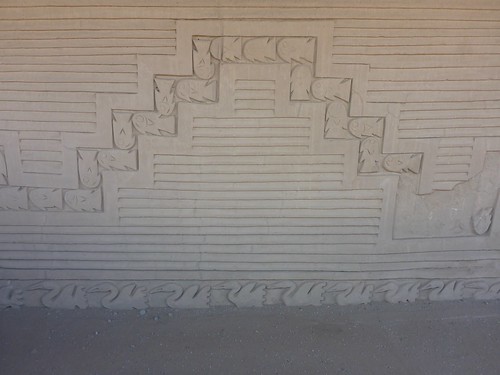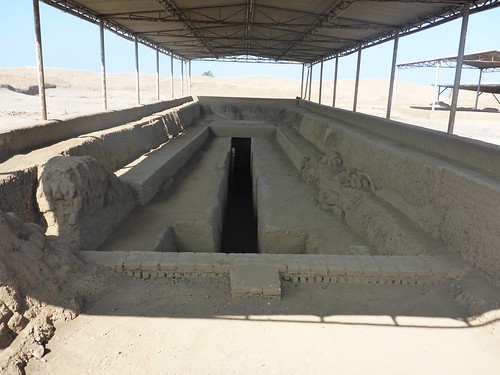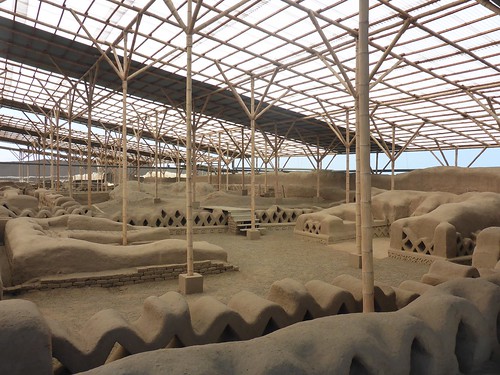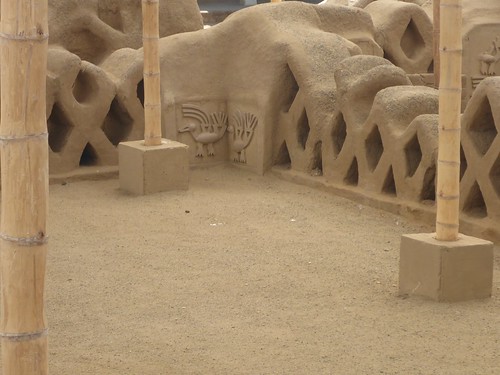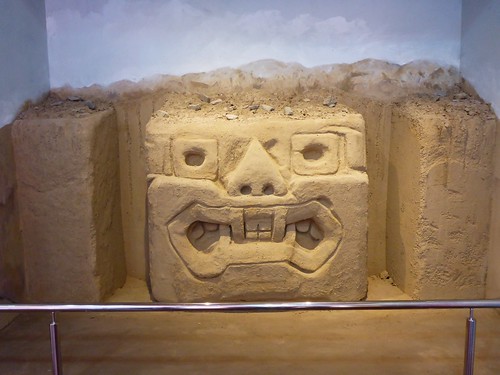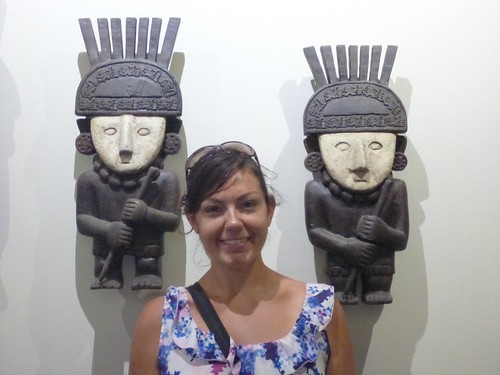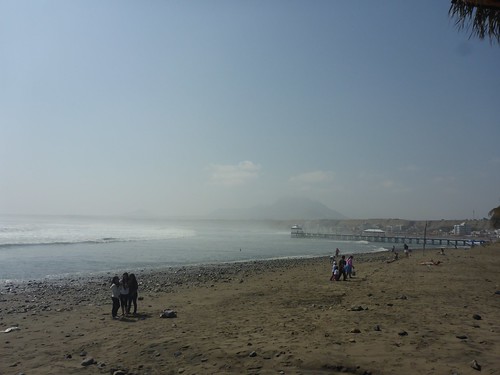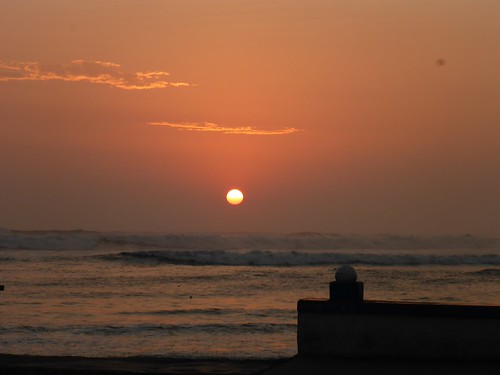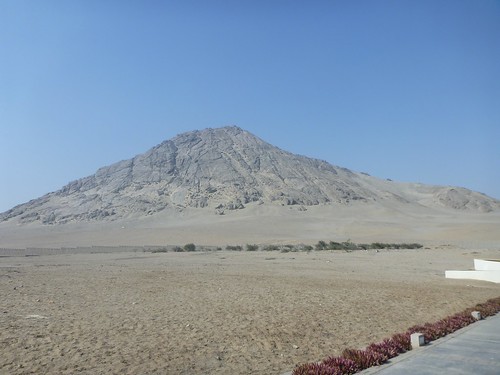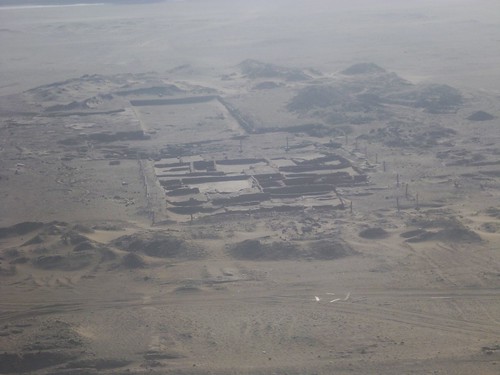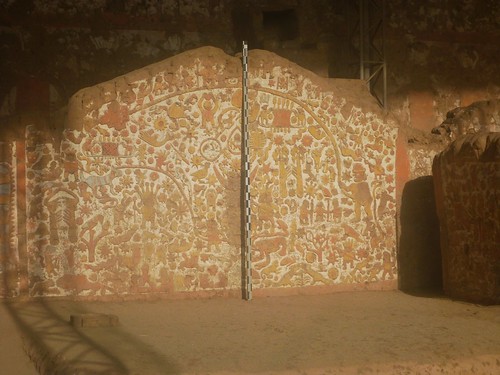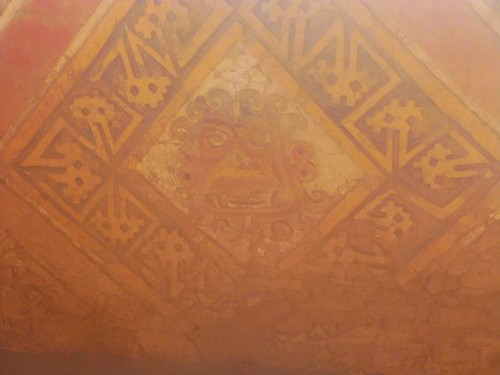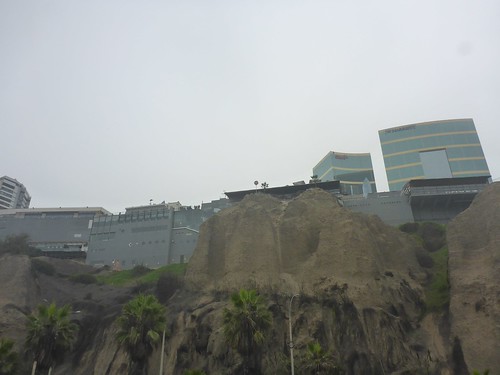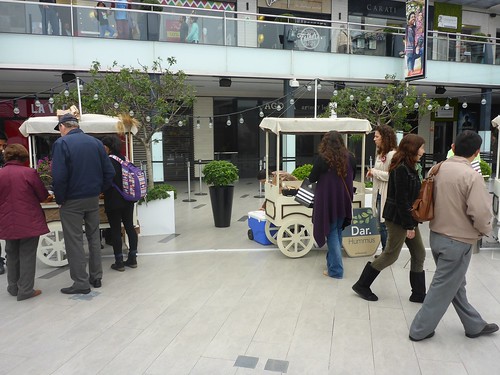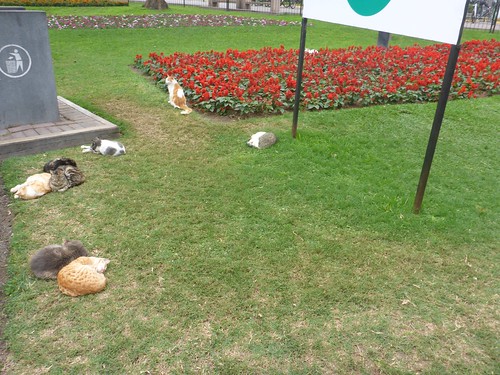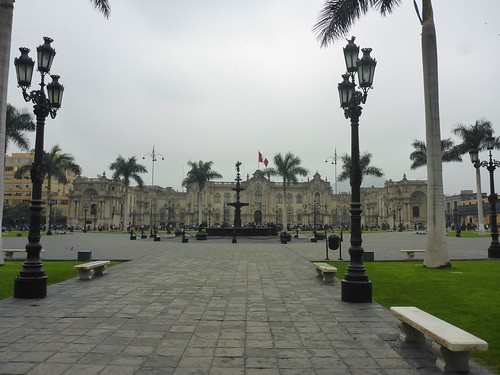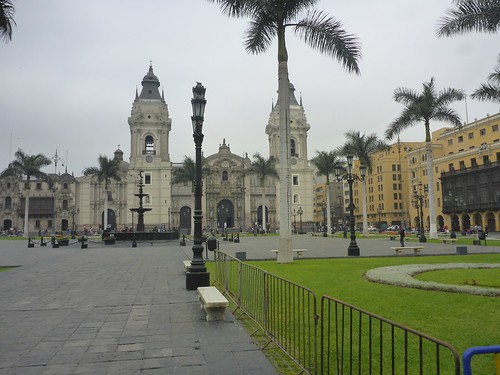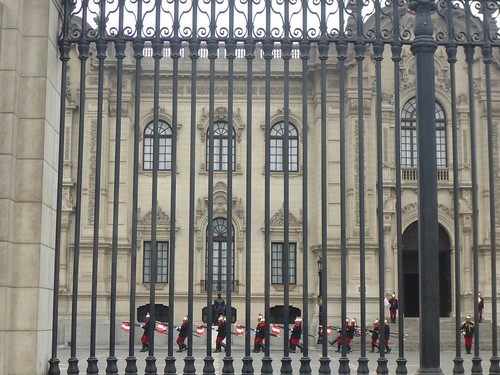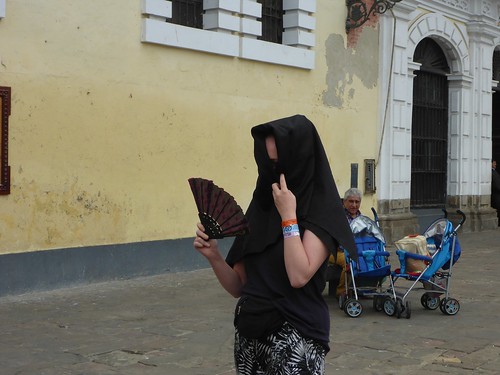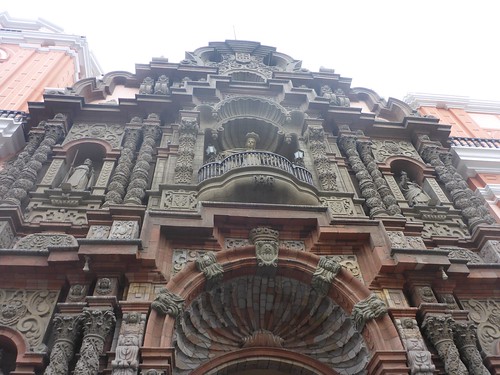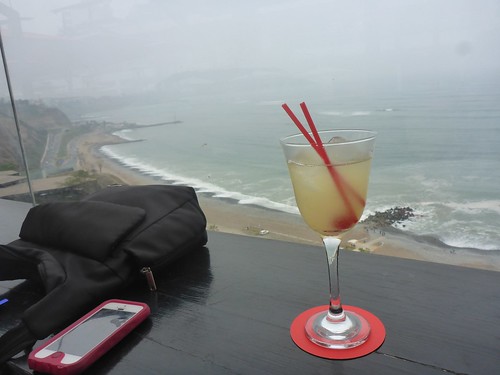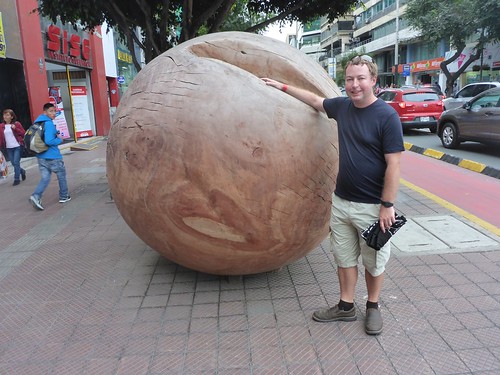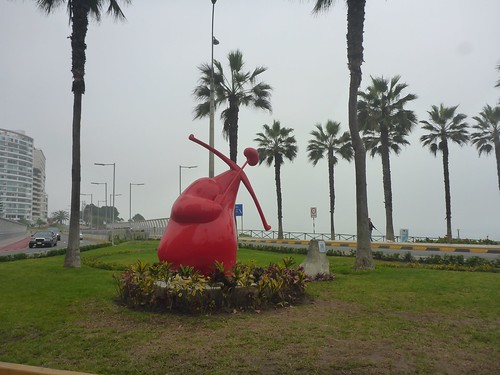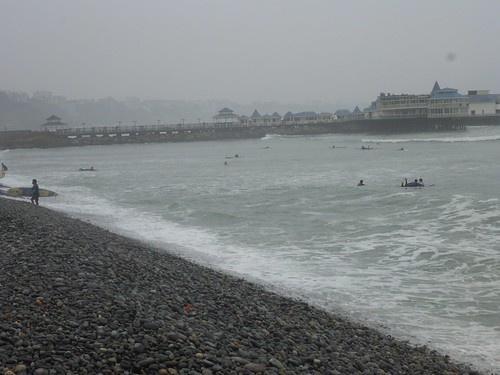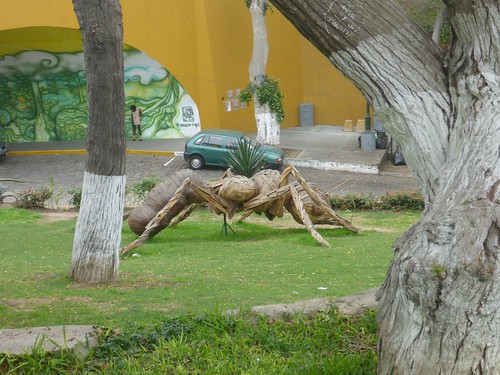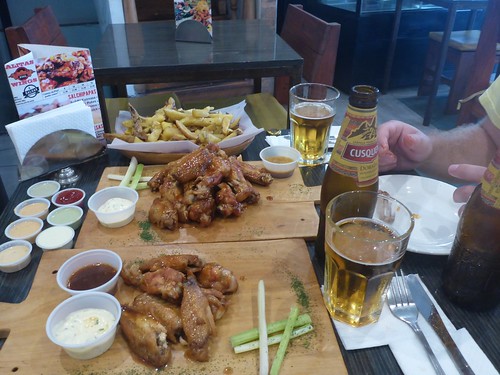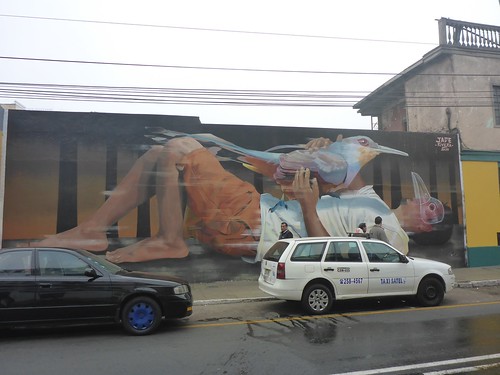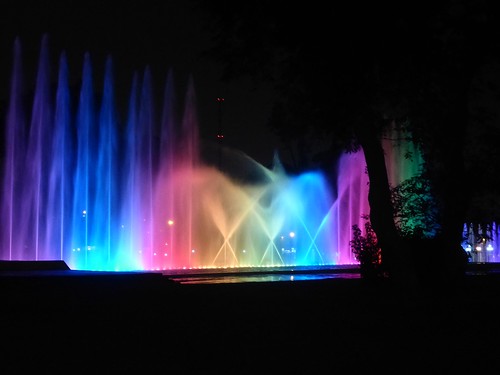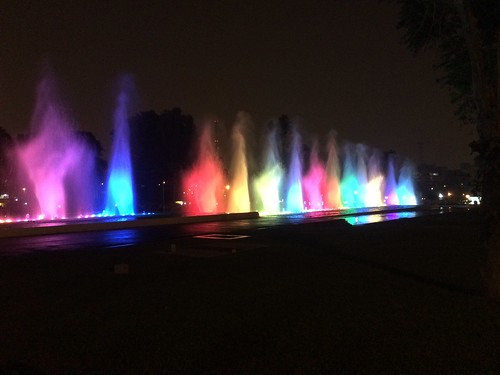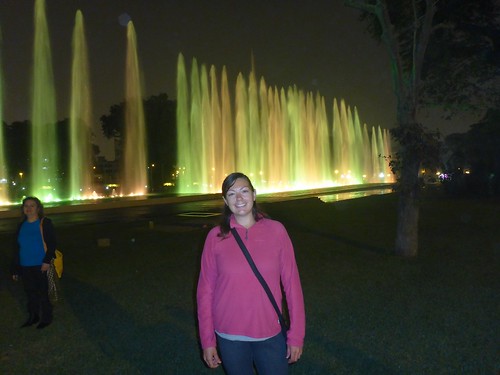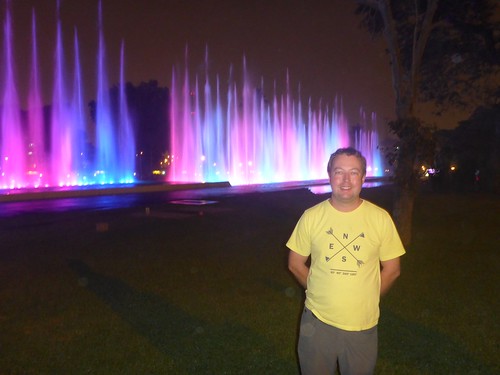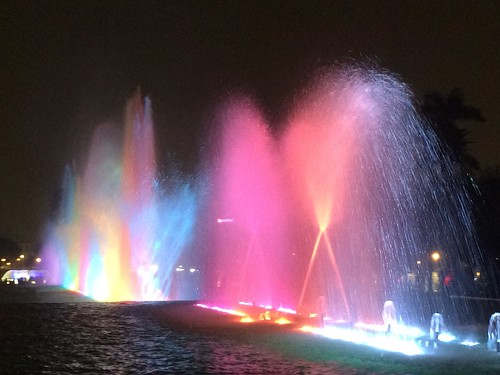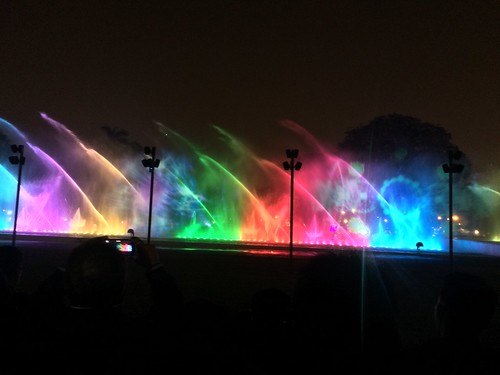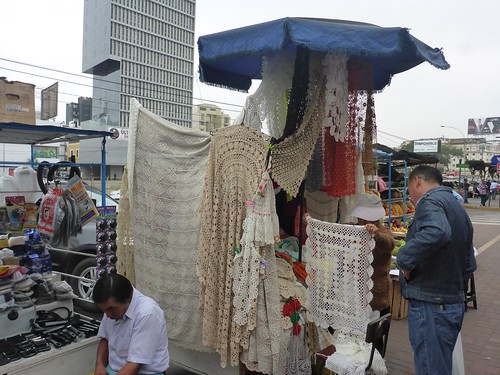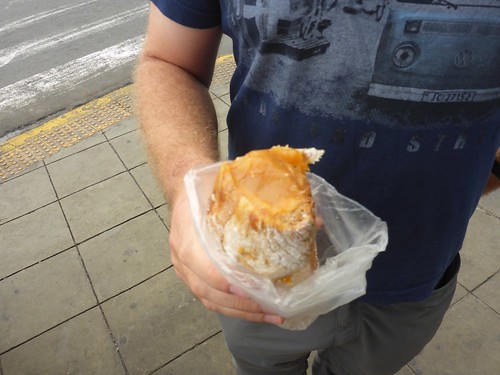The ocean! We can see the Ocean again! And sand, and dirt, and water!
Another early morning…
Saturday morning unfortunately involved an early morning pickup, between 5:15 and 5:45am. PeruHop had been on time so far (unusual for South America) so we’d packed the night before in an attempt to get more sleep in the morning. We set our alarm for 4:30am, got up, showered and ready, and then waited. Unfortunately after our good organisation, the bus was running late an arrived around 6:15am due to people at other hostels not being ready on time, they were apparently running on South American time. As we started heading out of Arequipa, the guide brought breakfast around and started taking orders for what we wanted to have for lunch. We thought that we weren’t going to get any breakfast on the bus, so we brought our own snacks - but some water, juice, a muesli bar, a mandarin and muffin were pretty good.

Sometime in the previous 24 hours Dee became a little unwell, it might have been food poisoning, it might have been a little too much cheese… either way a 10-12 hour bus trip was going to be interesting. It was James’ turn to catch up on the admin things, so Dee rested and watched a movie. While James said he was going to catch up on all the tasks we needed to do, in reality he procrastinated about doing that - probably doing some spreadsheety thing, or something to do with the black screen and green writing on the Macbook, this is open all the time (I have no idea what it is but it looks important). The trip was fairly uneventful apart from a lot of windy roads going down the dry dusty mountains until we hit a great big blue mass of water. OMG we hit the coast - the first ocean we’d seen in six weeks!

Peruvian ceviche at it’s best
We stopped into the seaside town Chala for lunch, both of us having ordered ceviche that morning, which came with a side of very sweet chicha morada. Not sure if ceviche was a great choice to have for lunch with an upset stomach, it didn’t really last long but on the plus side, it was delicious. After the quick lunch stop we continued on to Nazca, arriving mid-afternoon. Very few people on the bus got off, most of them were continuing on to Huacachina, and only seeing the Nazca Lines from the small tower on the side of the highway.
We checked into our hostel, which seemed nice enough, and went outside briefly to enjoy the warm weather - another difference to the last 6 weeks was that the overnight minimum was going to be 16 degrees! Dee still wasn’t feeling great, so she skipped dinner and James went out to grab a small quick bite and then returned to do some more things with the black screen and green writing on the Macbook.
Lines?
While on the bus we could book in for tours that we wanted to do in each of the towns we were visiting. Dee booked in for the flight over the Nazca lines, however James did not since he had done it previously, and the lines aren’t likely to be changing anytime soon (Greenpeace’s stupid efforts aside). At the height of food poisoning (thankfully only a mild case this time around), Dee downed some of the medication prescribed by the amazing Dr. Deb to try and settle her stomach before flying at 9am.
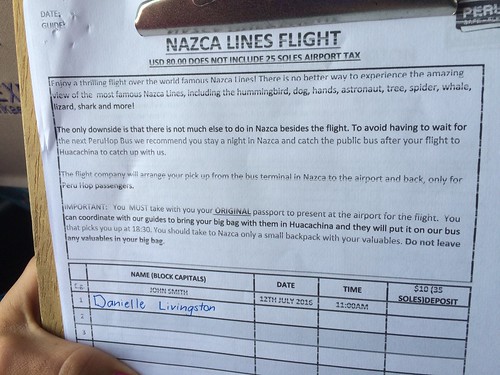
The flight over the Nazca isn’t exactly the safest of flights, as there have been numerous fatal accidents, and for a long time, a lack of air safety precautions, regular maintenance checks as well as issues with light planes and weather conditions. Apparently the earlier you fly in the morning, the safer it is, the later it is in the day the windier it is, and with planes flying on 45 degree angles side-to-side they can easily be blown around and crash.

It was also advised not to have breakfast before the flight as the tiny planes swing and swerve in the air… this was potentially going to be a recipe for disaster, upset stomach, no coffee, anxiety and no James to hold my hand while freaking out. Ready and waiting for the pick-up at 8:45 for the 9am flight, we waited, and waited, and waited. By 9:30 the reception of our hostel called the company to find out what was going on, PeruHop had told the flight company the wrong pickup address…
Still not flying yet…
After sussing out the pickup situation, and finally being collected, Dee was on her way to the tiny Nazca airport. Upon arrival, and after paying an exorbitant amount of money, it was time to hurry up and wait. The weather wasn’t amazing and the wait was going to be until 11am… what little confidence held in the flight company in the first place was rapidly deteriorating. There were some pretty flowers around the building though…

Nearly two hours after the original scheduled time it was finally time to get going. Piled into a plane that fit eight people, including the pilot and the navigator, we taxied the runway and were off.
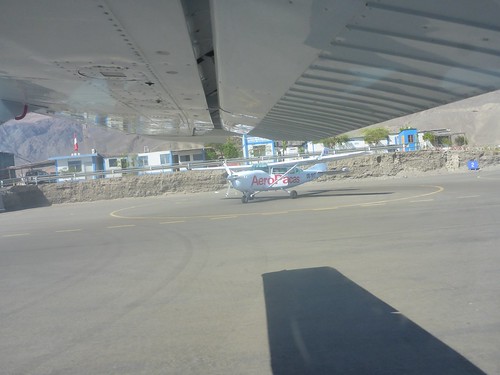
The Nazca lines are in the middle of the Nazca desert, they are thought to have been created somewhere between 500BC and 500AD. Their purpose isn’t completely known, though it is believed that they may have held religious significance to the original creators. There are hundreds of lines, most of which are geometric shapes, but there are a number that are shaped into animals, human figures and plants. The lines were created by moving the red-pebbled surface to expose the grey coloured ground underneath… this all sounds really simple, right? The largest figure is 370 metres in length, the creators didn’t have any kind of aerial view to help create the lines; how they managed to get them so perfect, I really don’t know. The preservation of the lines is also really cool, basically it doesn’t rain, the temperature doesn’t change much, and there is no surface wind - the wind is only up high where the tiny planes are.
The flight across the lines lasted only fifteen minutes, but it was amazing. The photos don’t really do this place justice.
Look carefully…
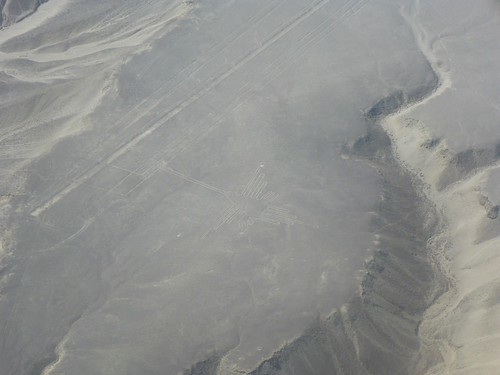
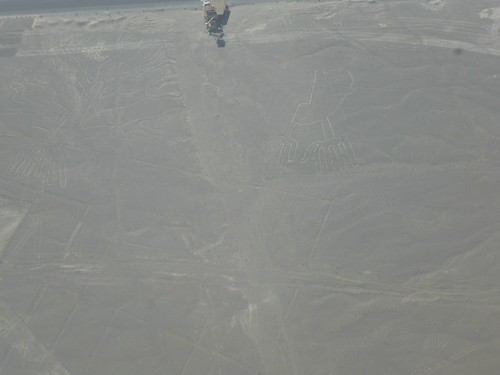

When in Nazca
After the flight, we still had another night in Nazca. We wandered around the town, took photos of random things, stumbled across a market that sold everything from the llama keyrings to goldfish and of course, stopped in for a quick pisco sour or two. Sometime during our stay in Nazca James also ended up with some kind of virus thing and succumbed to the wonderful medication Dr. Deb gave us. We’re hoping that this might be the last time Dr. Deb and her wonderful medications get a mention in the blog for a while.
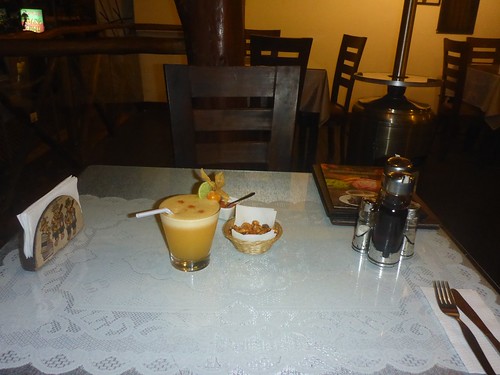

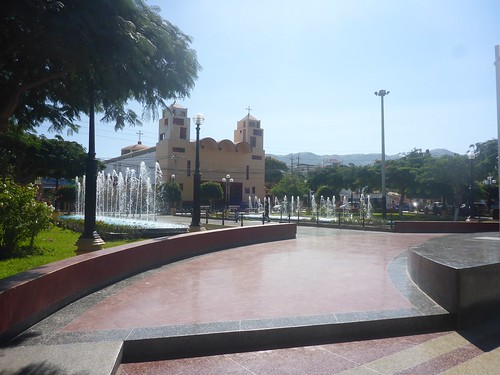
Another bus trip… yay (rolls eyes)
By this stage the bus trips are taking their toll… the PeruHop buses are nice, but we’ve had enough. I don’t want to be on a bus anymore, I don’t want to drive along winding roads, and I don’t want to feel like I’m going to die every time we go around a corner, or overtake someone. Though the drivers on the buses in Peru are much safer than those in Bolivia, it’s still a rather scary trip when they overtake other vehicles, driving the bus into oncoming traffic.
This bus trip was only going to be a couple of hours, driving from Nazca to Huacachina with a stop at a tower in the middle of nowhere so that those who opted not to do the Nazca lines flight, could see them. The tower wasn’t built by the government, since until somewhat recently they didn’t take much care of their historical sites, but by the German mathematician/archaeologist Marie Reiche, who also campaigned for the lines to be declared a UN heritage site. Unfortunately the Peruvian government’s lack of care also lead to one of the lines being bulldozed through when they were building the highway :(
The tower is pretty much a money making scam, as you can’t see much from up there, the people at the bottom are trying to sell you all of there “made in China” souvenirs, and you get charged a bit as you go up.
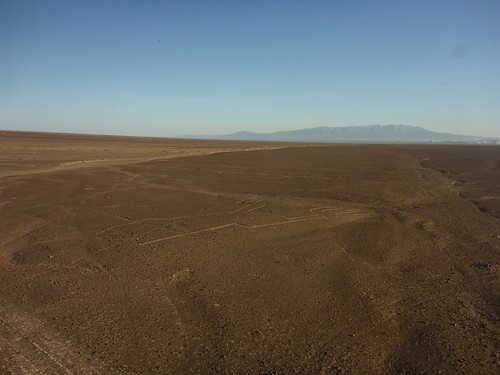

¡Hola Huachachina!
It was time to get off the bus and go for a hunt for the hostel we’d booked. PeruHop give options for hostels, most of which, when we have researched them, have been really expensive or have very terrible reviews from other travellers. Unfortunately, for us, we didn’t stay at the recommended hostels from PeruHop this time, instead deciding to stay at a place that looked great online… arriving into it, the scene was somewhat similar to Afromans’s filmclip “Because I Got High” - just a few rooms at the back of a bar.
Huacachina is a small desert town, just outside of Ica, in the middle of nowhere, surrounded by humungous sand dunes. There is really no reason to stay there, other than to go on one of the buggies to go sand boarding (which we could conveniently book on the bus). When we arrived we didn’t get much of a chance to see the sand dunes as it was rather dark. The town has a small lagoon in the middle, and like everywhere that has anything resembling a lake/lagoon/waterway in South America, there were boats to paddle around in.
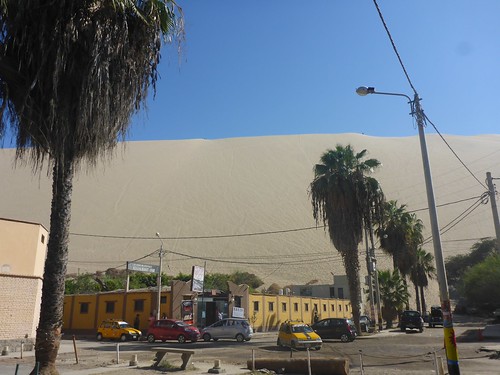
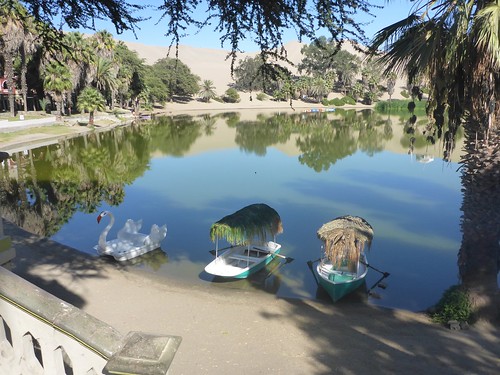
Tuesday morning we were extremely excited at the prospect of having a sleep in for the first time in ages… no 5:00am wake up, or so we thought. There doesn’t seem to be a stop or start time for construction, we were woken at the more reasonable time of 6:30am to a guy hammering the roof of our room; it appeared a second storey was being built above the current rooms of the hostel.
How to fix things with Pisco
After the abrupt wake up and some coffee it was time to have a little wander around the town and organise ourselves to meet up with the rest of the group to start our excursions. Wandering around we found a few interesting restaurants, including “Huaca-fucking-china” (excuse the language), were bombarded with tour information and the option of hiring motorbikes, bikes, boats, day trips, winery tours, llama keyrings, Nazca line pictures, portrait drawing and menus. Politely declining all of the above, from the same people every time we passed them, we found our group and organised to go on a Pisco Vineyard tour.
Surely by now you’ve read all about pisco? But if not, here is a little info for you (with a little help from our trusty friend, Wikipedia). Pisco is the creator of some of the worst hangovers you will ever have. It is a type of brandy that is produced in the wine regions of Chile and Peru - don’t tell them that though, since they both say the other country doesn’t produce proper pisco. It was made because the locals got sick of paying ridiculous amounts of money to import brandy from Spain, so they thought they’d over-ferment some grapes, turn them into a spirit and then drink it… sounds amazing? Well it kind of is, mix it with some lime, don’t worry about any actual drink mixers, chuck in an egg-white, some ice, some sugar and shake: there’s a Pisco Sour; it is potent and delicious when used in the correct manner. We’ve had pisco in many different places, with many different mixers, and most have been delicious; but like cheap wine (maybe even the deadly ‘goon’ variety) it gives horrific hangovers. You can make them in a blender too, but the egg foam on top isn’t anywhere near as nice.
Anyhow, back to the tour:
The vineyard we went to was El Catador, one of the ones that runs activities for tourists. By coincidence, it was the one that James visited when he was in South America last time, and like many other things was a lot more touristy than previously. We went on a quick 20 minute walking tour of the site, being told how they make pisco in the traditional way, rather than the industrial one. Originally the pisco was squished by feet in this area:
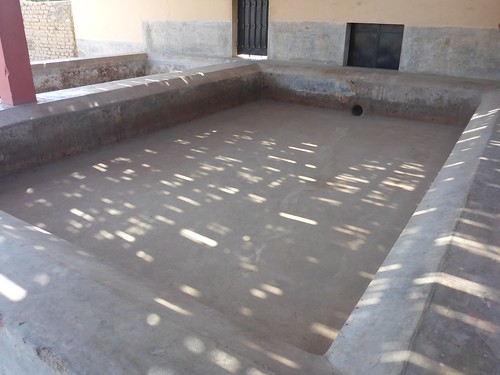
Then put into large pots, sealed with a bit of mud/cement, and then stuck in the ground to ferment for a while. Storing them in a hole rather than stacked up is very important since Peru has a lot of earthquakes - you wouldn’t want all your alcohol containers to smash. The actual town of Pisco was almost completely destroyed in 2007 by an 8.0 earthquake, so the danger is certainly there.

After the fermentation, the liquid is sent through to a massive copper still, and then the vapour to a giant pipe in a many-thousand-litre pool of water.
After learning about how the pisco was made, we got to go and try some, as shots. No mixers, and no chasers… though some were quite nice, the first two we tried could be closely related to rocket fuel. We made it through the pisco tasting, purchasing a bottle of chocolate pisco on the way out, before heading back to the hostel to get ready for more activities.
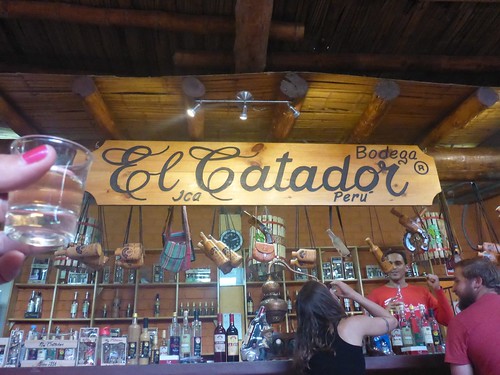

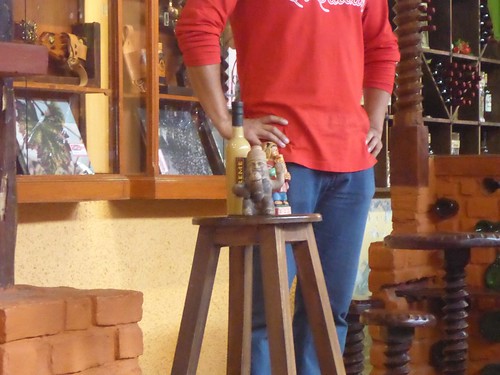
Little dune buggy…
While in Huacachina, aside from being hassled to hire boards and things to go down the sand dunes on, there is also a constant hum of the giant sand buggies that tear around the town.

As with the Nazca flight, we’d heard some pretty epic horror stories of accidents on the sand dunes, the drivers being drunk and reckless, and little maintenance on the vehicles to keep them safe. The anxiety was taking it’s toll, especially after the first five minutes when we stopped for the driver to ask us if we wanted the slow or fast tour (of which, we had to pay him an extra tip for). Our group being sensible, chose the “we want to die on the sand dunes going ridiculously fast” option.
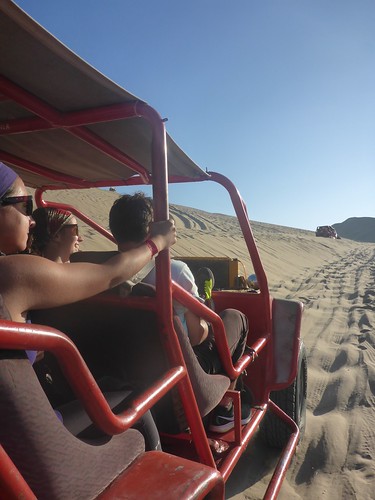
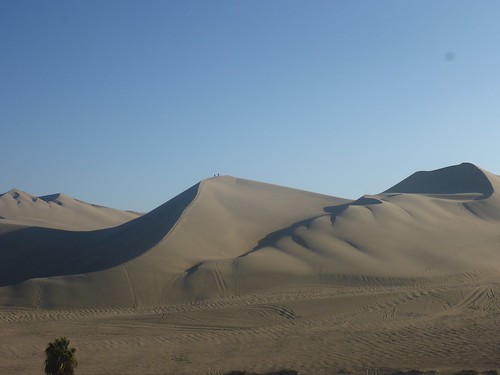
Up and over hills we went, hanging on for dear life, screaming… If one has a fear of heights, or knows what damage accidents on sand can do, this is probably not the tour to go on. Thinking the ride there in the buggy was scary enough it was time to do the actual sand boarding itself. Given bashed up snowboards we were ready to go, until old mate (the crazy driver) informed us there was a very specific way to get down the hill so that we didn’t seriously injure ourselves, or end up with sand in orifices that we didn’t want it. Of course, the most sensible way was face first, hanging on for dear life, down forty metre sand dunes - after waxing your board with a piece of candle he purchased along the way. Terrifying is an understatement…
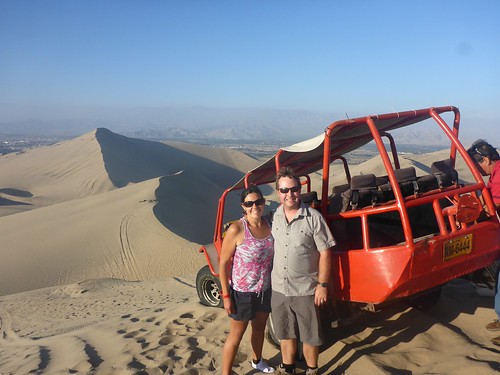
Sand in my pants
After doing four of the hills successfully, avoiding near collisions with other tourists who refused to get out of the road at the bottom of the dunes, it was time for another crazy ride in the buggy. Although the ‘face-first’ strategy was supposed to help stop some of the sand getting into uncomfortable places, it did not. Rest assured you will not be subjected to pictures of where the sand was. Look how tiny we are compared to the dune.
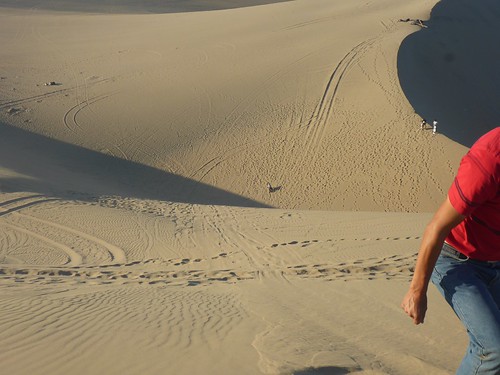
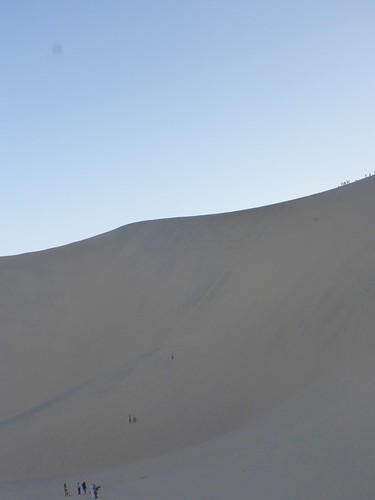
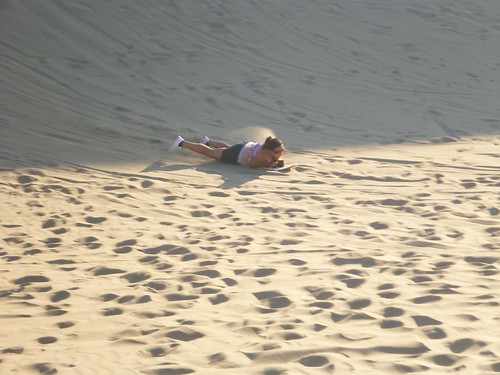

After sorting out a little of the sand situation, including getting the couple of tonne out of our shoes, we arrived at our next stop; the top of a giant dune to watch the sunset. Words cannot do the view justice… so here are some more pictures.
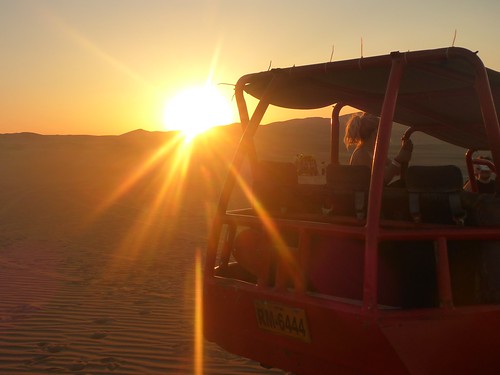


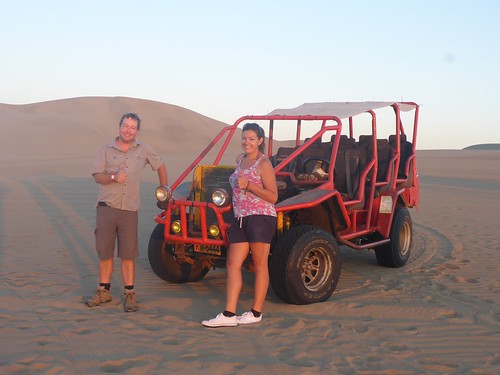
Trying to hang on for dear life, and having a rapidly loosening seat belt could be described as fun for some people… for Dee, not so much. The rest of the people in the buggy had great delight laughing at Dee’s blood-curdling screams as we sped over the dunes. I will point out that the trip back to Huacachina was just as fast as the trip out, except we were now driving mostly in the dark. We made it back safely, just.
Sand for days
After arriving back to Huacachina, it was time for us to get onto another bus. The sand situation mentioned earlier still hadn’t been rectified. Fortunately, for us, we only had a two hour bus trip covered in sand to get to Paracas; for one of the other guys in our buggy, he had an 18hr bus ride, sans shower. Definitely didn’t envy him.
Paracas didn’t hold much adventure, we were able to somewhat sort out the sand situation, and chill out with a couple of drinks with a few of the girls we’d met earlier in the trip. It’s funny while travelling through the tourist trail of South America, you run into people continually that you’d seen weeks or months before. Paracas was no different, Kate from our trip to the Colca Canyon was there, and Billie and Caitlyn who we met in Florianopolis in Brasil (then again in San Pedro) also happened to make an appearance.
Whilst in Paracas, James went on a trip to the Paracas National Reserve while Dee chilled out and took some time to chill out and relax - this inevitably ended up in having beers with people at the Kokapelli hostel. The reserve is both a land reserve and a marine reserve, helping to protect a lot of local wildlife (like birds) and some historical sites. The reserve isn’t that exciting to look at, lots of dry rocky ground (with plenty of quartz fragments everywhere), cliffs, and rocky beaches.
That afternoon we strolled around the shore of what could loosely be termed as a beach cum boat harbour, ate ceviche and watched the world pass by for a little while.

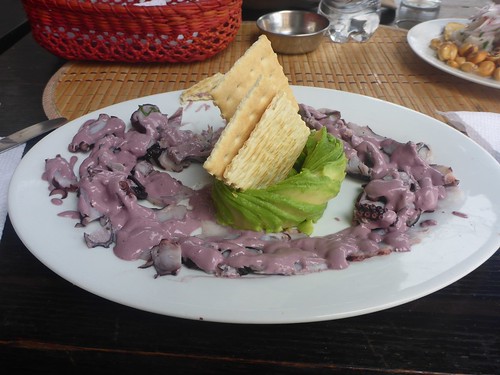
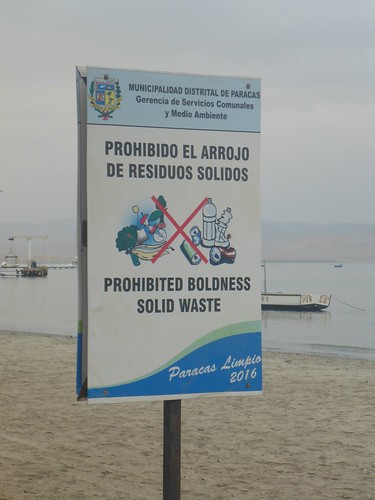
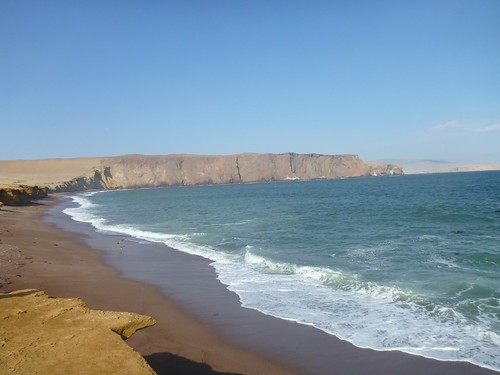
In the afternoon we were to meet back with the PeruHop crew in minibuss to go to Hacienda San Jose; a giant mansion that was owned by San Jose and his cotton and sugar cane farms. We arrived after dusk and taken down into the eerie tunnels that connect with four other haciendas in the area, as well as the port which is 17km away.
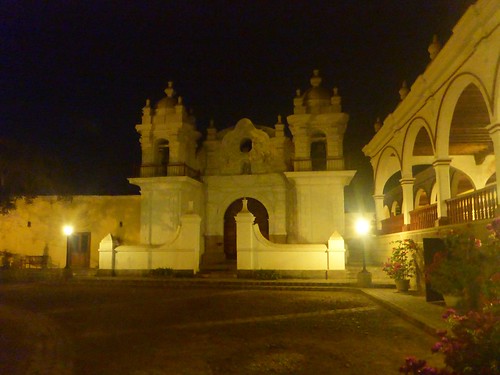

Unfortunately, in the time that the hacienda was built, slavery was legal; to avoid paying taxes to the government the owners created the tunnels from the port to smuggle people in. The mansion, as well as the nearby church, have many hidden entrances and escape routes linking the buildings together. The hacienda was beautiful and extremely interesting; though it’s since been transformed into a guesthouse - the eeriness of the place was enough for us not to want to stay.
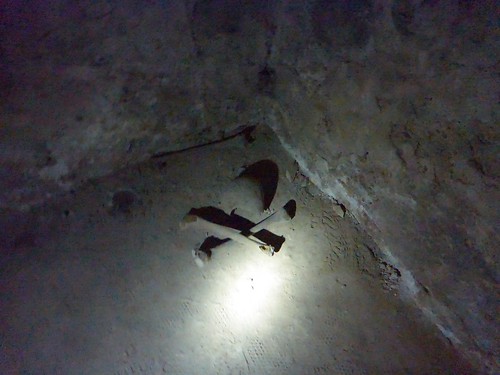
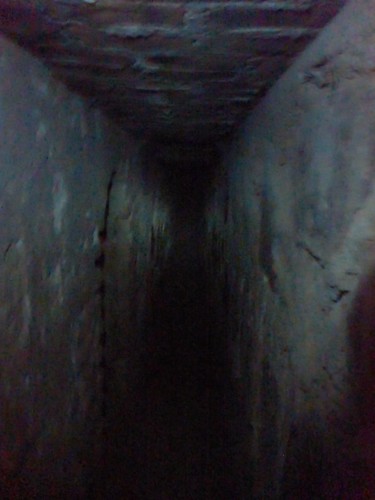
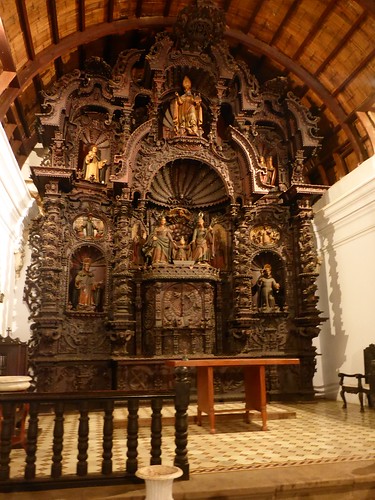
After the hacienda visit it was time to meet up with the big bus and make our way to Lima.
Go see all the photos from Nazca, and Huacachina, and Paracas
